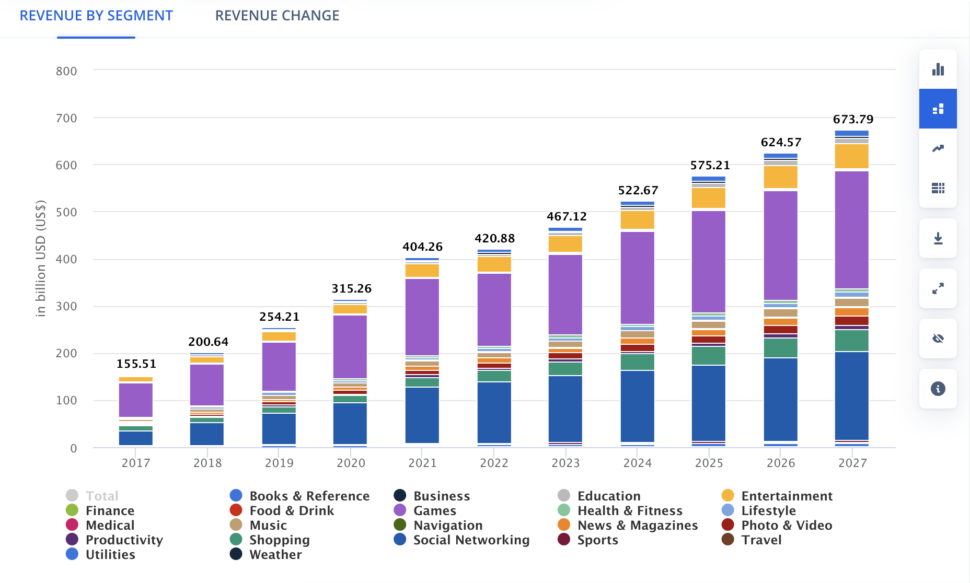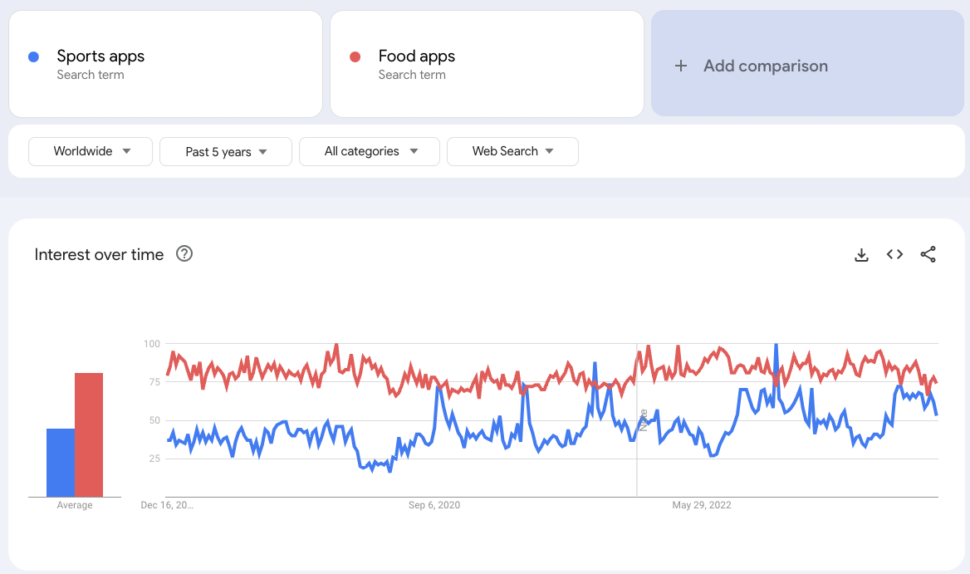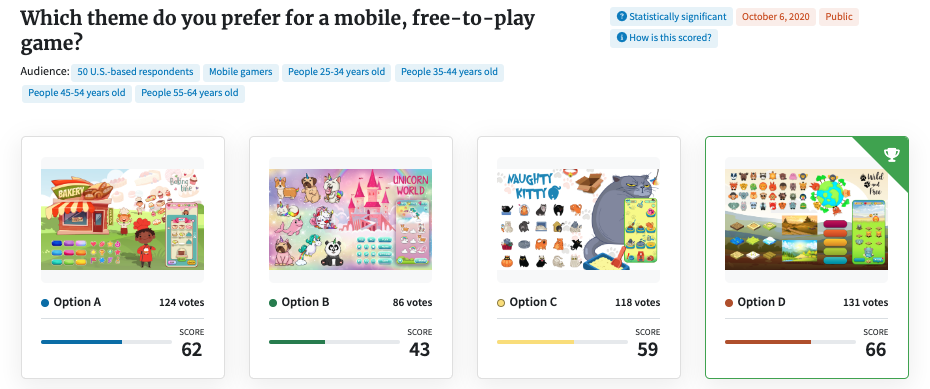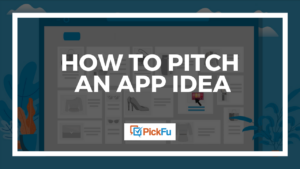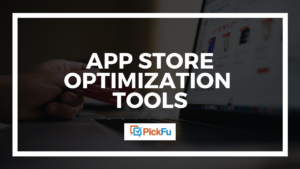In a world driven by ideas and innovations, it’s not uncommon to hear the words, “I have an idea for an app.” Whether it’s a game-changing productivity app, an interactive game, or a new type of social media platform, these app ideas have the potential to be the next big thing. It’s why Statista projects the industry to hit a market volume of US. $673.80 billion by 2027.
But conceiving the idea is just the beginning. Once the initial euphoria from your spark of inspiration fades, you might find yourself at a crossroads, wondering about the next steps to transform your idea into reality.
In this guide, we’ll give you a roadmap to follow from that first thought of “I have an app idea” to developing a fully functional and profitable application. Let’s dive in.
Before you start, keep these tips in mind
Have a long-term mindset. Whether you decide to sell your app after a few years or not, you’re in this for the long haul. This mentality will help you make better, sustainable decisions.
Be ready to invest considerable time, effort, and/or money (if you have the finances to support your idea).
Protect your intellectual property (IP) before sharing your idea with anyone — whether it’s with potential investors, collaborators, or coders. You can secure your IP with a non-disclosure agreement (NDA), copyright protection, trademark registration, and by limiting access to sensitive information.
What to do next: 5 steps to execute your app idea
The process of developing and launching a successful app can vary across different verticals. This is due to industry-specific regulations, user expectations, user interface considerations, and business models. Hence, the five steps below are the general guidelines for executing your great app idea. Depending on your vertical, you might need additional steps.
Step 1: Validate your idea with market research
Before diving headfirst into the app development process, validate your idea by conducting market research. This will help you determine if there is a reasonable level of demand for your app and if it’s sustainable (i.e., not a fad).
Often, founders build apps to solve a problem they are facing without verifying whether the problem is widespread and has market potential. It’s no wonder 99.5% of consumer apps fail, as lack of research is one of the prominent reasons for this failure.
During your app market research, here are some questions to seek answers to:
- Who are your potential competitors?
- Identify existing apps solving similar problems to yours.
- Conduct a competitive analysis to learn their features, pricing, market presence, and gaps you could take advantage of. This will also help you determine your unique selling proposition (USP)
- Who is your target audience?
- Learn the demographics, behaviors, preferences, and pain points of potential users in relation to the problem you address.
- Is there a demand for your app idea?
- Check that a substantial number of people are expressing interest in the solution.
- What are the potential barriers or challenges?
- Look for any challenges (such as market saturation or seasonality) or regulations that may impact the development and success of your app.
Conduct your proof of concept testing via the following methods.
- Online polls: Instead of market surveys, polls are a quick and easy way to get feedback to validate your idea. So, create a poll containing targeted questions and share it with your audience. PickFu makes polling faster and easier for the app and gaming industries. You’ll get responses in minutes, and you don’t have to go through the trouble of looking for respondents. PickFu has a panel of more than 15 million consumers worldwide.
To determine the credibility of an idea, create an Open-Ended or Star Rating poll asking the audience what they think. Here’s an example of a PickFu poll to validate a trail companion app. The responses will let you know whether you’re on to something.
- Monitor trends: Customer insights platforms like Glimpse will help you gauge the popularity of your business idea and provide valuable search data. Industry reports and publications are another useful medium for obtaining market insights that can inform your app marketing strategy.
- Social listening: This involves monitoring discussions about your app idea on social media platforms. It helps with understanding customer sentiment in real time. Audience research tools like Sparktoro and Audiense are great for this purpose.
- Interviews & focus groups: Conduct one-on-one interviews or group sessions with potential users to learn about their needs, pain points, and expectations. You can do these in person, over the phone, or online (video calls or chat).
Analyze the data collected and use them to make necessary adjustments to your idea. Once you’ve validated your idea and proved its viability, move to the next stage.
Step 2: Develop a product strategy plan
You need to create a comprehensive plan outlining your app’s strategy. This establishes the product’s general direction and will serve as a roadmap to guide actions throughout the application development process.
Here are some key pieces of a product strategy plan:
- Define your app’s goals and objectives: This means articulating your app’s purpose and what you want to achieve with it. Defining the goals sets a clear direction and provides a focus. For instance, if your app is a productivity tool, the goal may be to help accounting firms work effectively.
- Create a user persona: Develop a profile of your ideal user by gathering demographic and psychographic data, pain points, and needs, alongside other insights related to the problem your app solves. Use this data to create a fictional character that you’ll use as a reference in decision-making.
- Identify a monetization strategy: Unless it’s a nonprofit app or you don’t want financial remunerations, think about how you’ll make money from your app. Monetization strategies include a one-time fee (e.g., Procreate, Google Play app), ads and in-app purchases (most gaming apps), a freemium model (e.g., Headspace, Calm), a subscription model (e.g., Spotify, Netflix), or a combination of multiple models.
- Determine your app’s features: List the core functionalities your app will offer to meet users’ needs. Note you don’t have to release all the features at once when starting. Instead, prioritize features according to essentiality and your USP. Decide whether to create a web, desktop or mobile app for a start. You can always go hybrid later on.
- Decide on funding options: Developing and maintaining app business operations takes considerable financial commitment. If you want to retain 100% ownership and can afford it, bootstrap your startup, (i.e., fund it with your own money). Or, go for other funding options like crowdfunding, Angel Investors, Venture Capital (VC), friends and family, applying for grants, entering contests to win money, and loans. You’ll need to create a business plan and a pitch deck to get outside funding.
Step 3: Create a minimum viable product (MVP)
Now we’re at the fun part – this is where you build your app!
Where many entrepreneurs get it wrong is wanting the app to be perfect from the get-go. That is a waste of time and resources. It’s better to release an MVP, an early-stage version of the app with core features to satisfy early users, who will then provide useful feedback to aid further software development.
If you’re a developer or have a technical co-founder, you can develop the MVP on your own. Otherwise, hire a professional app development company or freelancers.
For the former, prepare to invest a significant amount of your time into the process. For the latter, you’ll spend a lot of money on outsourcing. There’s also the option of no-code app builders.
Before hiring a development team or freelancer, do your research on them. Check their portfolio and reviews, and ensure their pricing aligns with your budget before moving ahead. Set realistic timelines and milestones to track progress.
Once you have a working version, it’s time for prototype testing with real users to receive feedback.
You can test different elements of your product with PickFu. Unsure of the name? Run a poll testing different app name options. Also, test your app or company logo, app store icon, UI, characters, and gameplay. Do usability testing of your new app. In PickFu, you can segment respondents by demographic, psychographic, location, and behavior to give you the best, most relevant results.
See an example of a concept testing for a new product with a PickFu poll to choose a mobile game design theme.
Step 4: Submit your app to the Google Play Store and App Store
Once you have a fully developed version of your app, it’s time to make it available to the public using Android and IOS devices.
You’ll first need to create developer accounts with Google and Apple. (Note: there is a one-time fee of $25 for the former and an annual fee of $99 for the latter).
Next, prepare your app for submission and check to see that it meets the requirements of these platforms before proceeding.
To submit to the Play Store, you must have a unique bundle ID and a signed app release. Then add information like the description (short and full), screenshots, hi-res icon, feature graphic, video link, app type, and category. Upload the app APK or bundle files; if your file size is over 100MB, break it up into expansion files. Set the appropriate content rating, pricing, and location availability. Hit publish and wait for confirmation or rejection in about seven days.
To launch in the App Store, create an App Store Connect record. You must sign a contract covering the payment terms for a paid app. Create a new app and fill in information like Apple platforms (your app supports), name, primary language, bundle ID, Stock Keeping Unit (SKU), and user access (limited or full). Once registered, upload your app directly or via Xcode, then upload screenshots, previews, description, promotional text, URLs, and icons. Choose a release date and set age ratings before submitting. You should receive a response within 24-48 hours.
If they reject your application, review the feedback provided and make the necessary adjustments, then resubmit.
Step 5: Market your app
Sorry to disappoint, but “hope” isn’t a startup marketing strategy. You can’t go through all the hard work of creating a good app and “hope” to get customers. Even great products need marketing. People won’t discover your app if you don’t put in a deliberate effort to promote it.
There are a few things you can do to bring awareness to your app without spending too much money.
- App Store Optimization (ASO): Optimize your app listing to improve its visibility within the app stores. In-app store tactics include optimizing app name, description, URL, subtitle, keywords, screenshots, and app icon. The end result is increased downloads and sales.
- Build in public: It means being active on social media and sharing your app’s journey as you grow. This will build your reputation and attract potential customers.
- Content marketing: Creating content (articles, videos) teaching people how to solve some problems, preferably with your app, is a good way to gain users. Add in SEO and distribution to bring more eyeballs to your content.
- Partner marketing: Employ partner and affiliate marketing, where you collaborate with others to promote your app. This could be a collaboration with other complimentary apps or with affiliates. Also, have a referral program where you encourage your user base to recommend your app to other people. Offer affiliates and referrers mouthwatering incentives that don’t have to be monetary. Free subscriptions to your product, premium access, etc., are examples of non-monetary incentives.
Consider paid advertising and influencer marketing to reach a larger audience as soon as you can afford it. Don’t forget to track key performance metrics and test your brand marketing at every stage with PickFu polls.
Ideation is the beginning – execution is where the real work begins
The truth is that ideas are everywhere – everyone gets them. But what sets you apart from someone who says “I have an app idea,” is what you actually do with the idea (AKA, the execution).
By following the steps outlined here, you’ll be able to bring your vision to life. Along the way, use feedback tools like PickFu for idea validation and gathering user feedback to innovate.
Sign up for PickFu today to validate and optimize your app – polls start at just $1 per response.
FAQs
What do I do if I have an idea for an app?
Congratulations on your app idea! The first thing to do is to validate your idea, i.e., assess its viability and ensure there is a reasonable level of demand for it. Once you’ve determined this, formulate a plan, develop the application (desktop, mobile, or web app), test user experience, submit it to the Android app and Apple App Store, and market your app.
How do I sell my idea for an app?
You can sell your app idea to angel investors, VCs, tech giants, friends and family. But before pitching your idea to them, protect it with NDAs, copyrights and trademarks. Prepare a killer pitch deck plus an elevator pitch to increase your chances of success.
How do I make money from my idea for an app?
There are multiple ways to monetize your app, like in-app purchases, subscriptions, the freemium model, advertising, etc. Consider your target audience, app category, and value proposition before choosing a monetization strategy.

